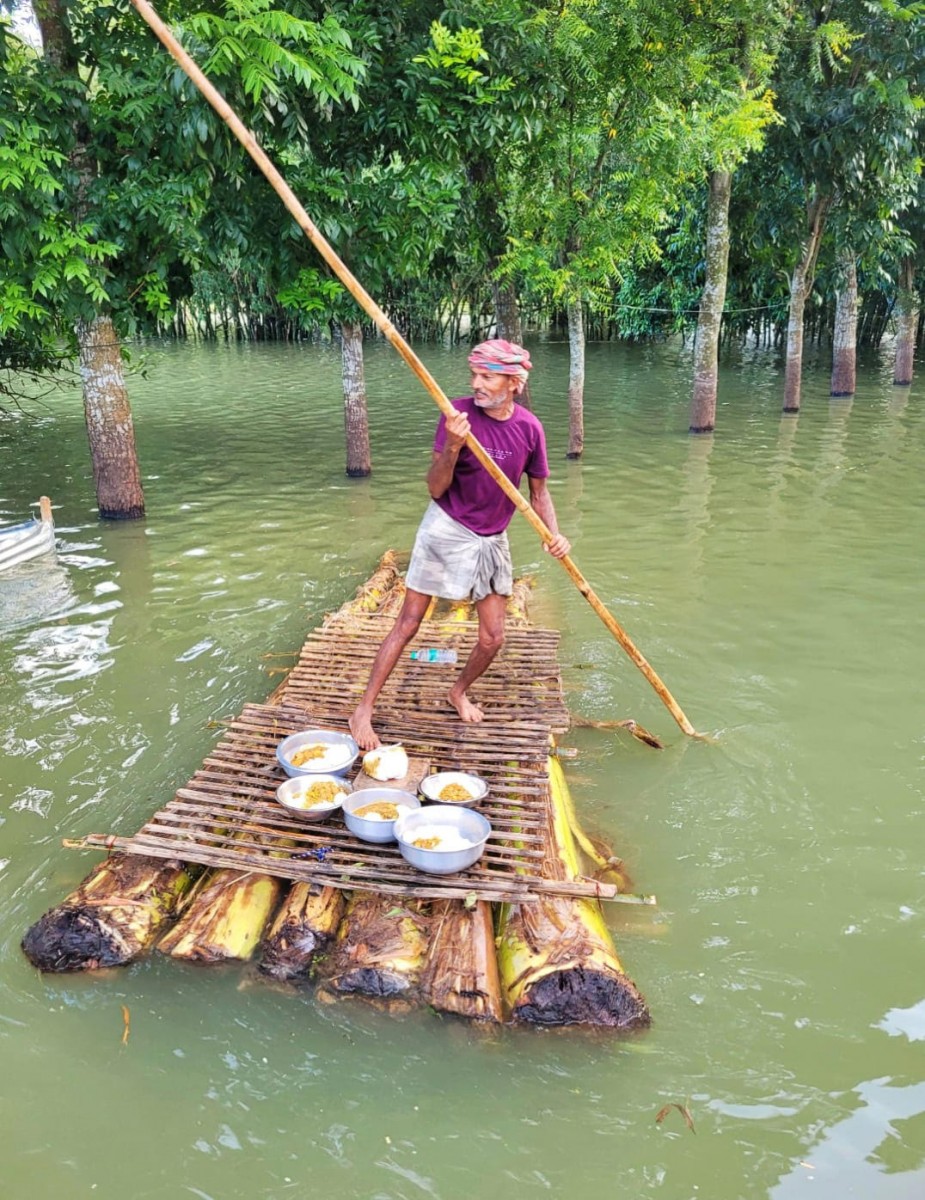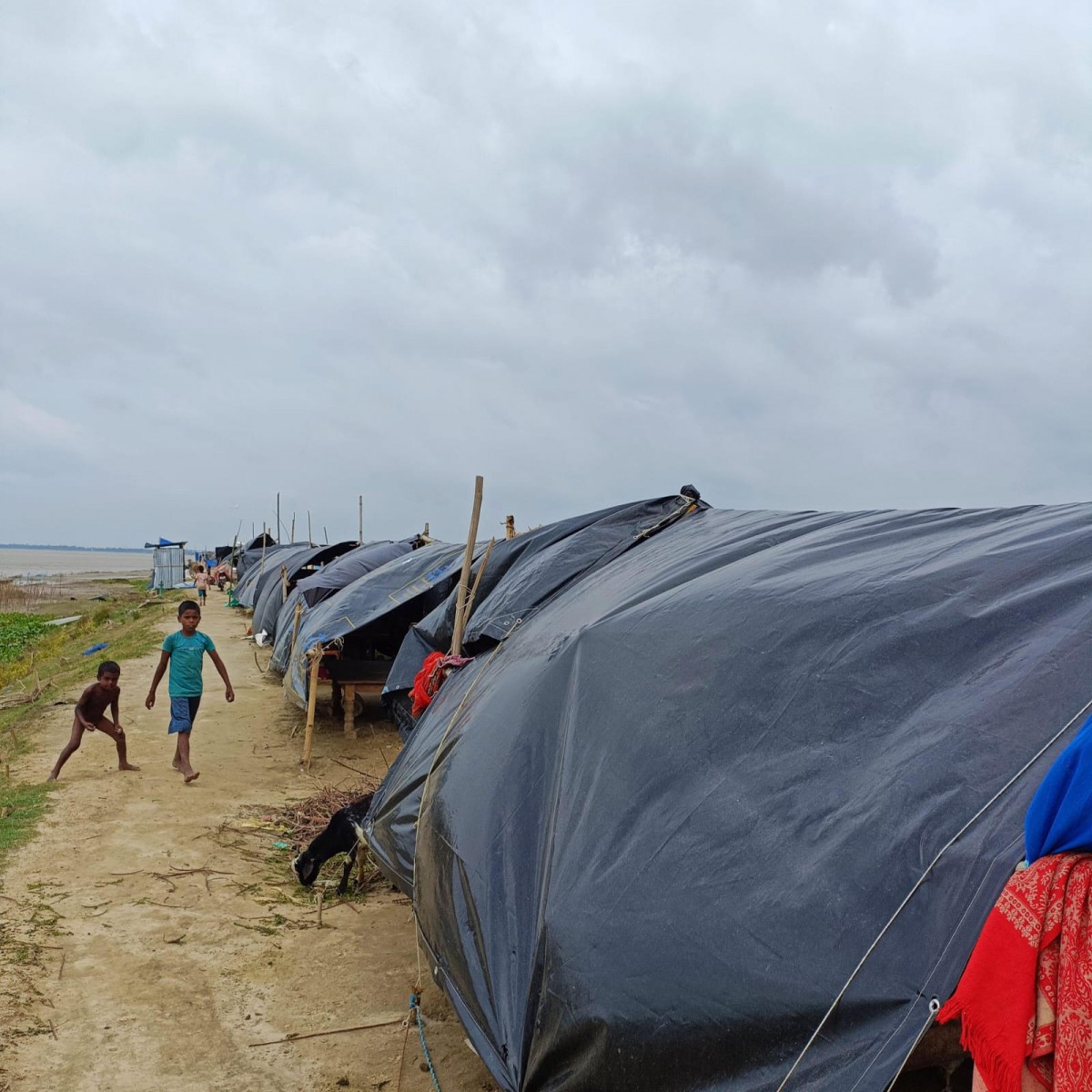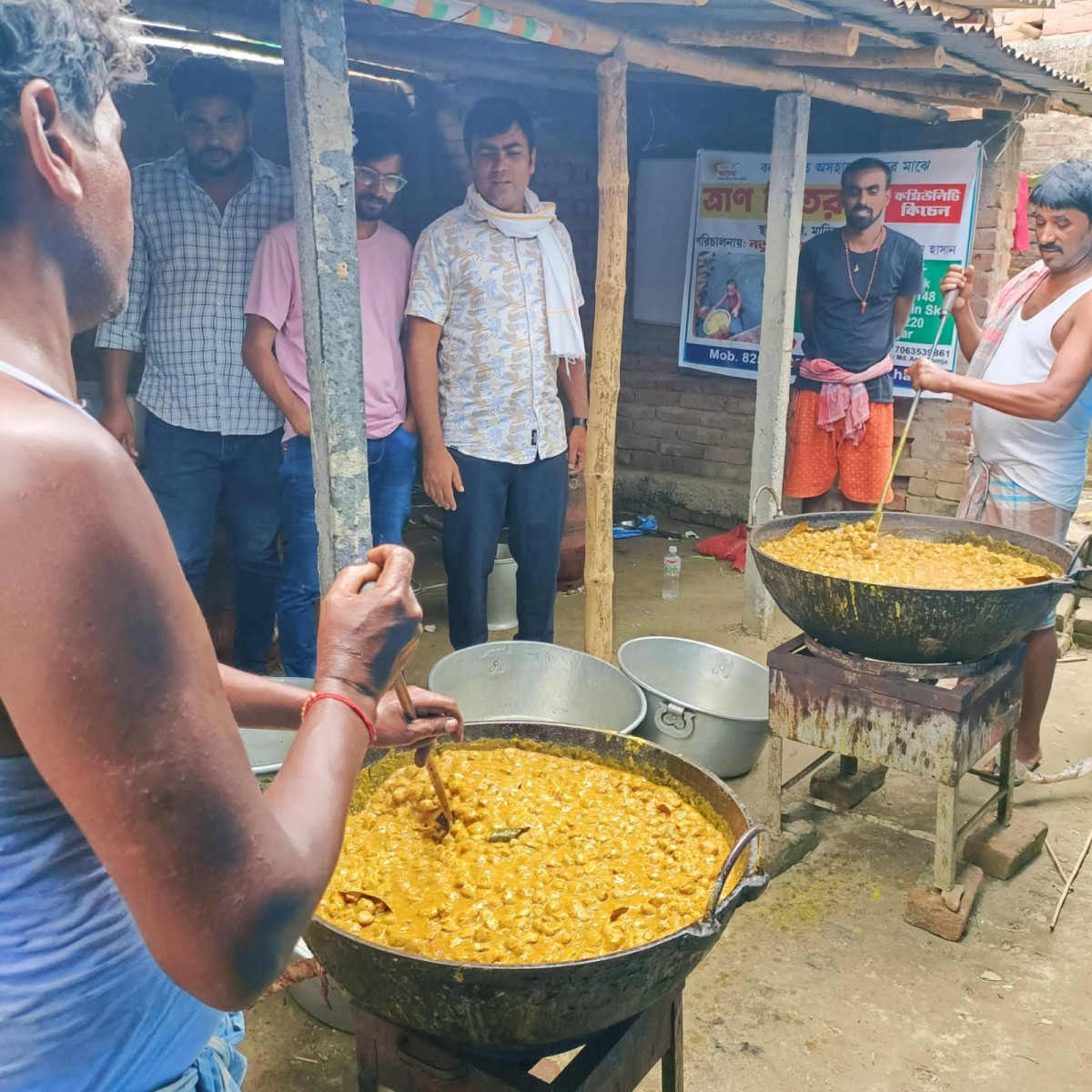Homes Submerged, People Wait in Relief Camps as Floods Ravage More Than 50 Villages in Bengal
Bhutni (West Bengal): More than 50 villages in Malda district have remained submerged for over a month as a result of the West Bengal floods, affecting over three lakh people and plunging the area into crisis.
The relentless flooding from the Ganges and Fulhar rivers has particularly impacted three panchayats in the Manikchak block of Malda – Uttar Chandipur, Dakshin Chandipur, and Hiranandapur.
Largely unreported in mainstream media, the disaster has caused tragic deaths, including those from snakebites, electric shocks, and the lack of medical care for a pregnant woman. Severe food shortages and skyrocketing prices have left residents struggling for survival. Locals say they haven't witnessed such catastrophic flooding since 1998.
Bhutni islet, situated between the mighty Ganges and Fulhar rivers, is vulnerable to flooding. The Kosi river, which connects the two larger rivers, has contributed to the increased flooding risk. As the Ganges river has widened over time, the gap between it and the Fulhar River has narrowed, making Bhutni islet more susceptible to inundation.

A raft supplying food to the relief camps in the flood affected region. Photo: Joydeep Sarkar
The recent floods have destroyed homes and livelihoods, especially affecting farmers who have lost their crops and belongings. While local authorities have provided some relief materials, the scale of the disaster has forced residents to resort to extreme measures for survival.
Villages submerged, people living in government shelters
“We’ve been living in a government shelter with a tarpaulin for cover, enduring stormy weather and floodwaters for a month. Our paddy and jute crops have rotted. Who will compensate us?” said Jugal Mahato, whose home remains submerged.
Alamgir Khan, also known as Rancho, from Kaliachak, has been running community kitchens in the region for over a month through his voluntary organisation.
“We rescued stranded families by boat. Many homes were flooded, but people were reluctant to leave. We’ve been providing food day and night, and three kitchens are still running,” he said.

Government shelters in the flood-affected regions of Malda district. Photo: Joydeep Sarkar
The government's efforts to restore normalcy in the flood-affected region have been hindered by persistent flooding and erosion. As water levels gradually subside, concerns arise about the long-term consequences of the disaster and the necessity for comprehensive rehabilitation plans.
A report published in The Wire in December last year highlighted locals' apprehensions about an impending disaster.
“In December last year, The Wire reported that if the river embankment broke and the water level in the river rose, there would be a major disaster. If the government had repaired the broken embankment at two places for a few lakhs of rupees in nine months, this disaster would not have happened!” said Debjyoti Sinha, a volunteer engaged in relief work.
"Losses in hundreds of crores"
“We’ve initially estimated losses in hundreds of crores rupees. A government assessment is underway. Such a flood hasn’t occurred in over two decades, and this year’s jute and paddy cultivation was particularly good – but now it’s all gone,” said Sabina Yasmin, Minister of State for North Bengal Development and Irrigation & Waterways.
While the government is claiming the relief efforts are “adequate”, there are allegations of theft and mismanagement. Criticism has also been directed at the central government.
“They once promised to protect a 120-kilometer embankment but have now reduced it to 9 kilometers. This has only worsened the situation,” said TMC Panchayat member Imran Hasan.

Food being prepared in a relief camp. Photo: Joydeep Sarkar
Local resident Kalam Sheikh echoed the sentiment, urging the central government to declare the situation a national disaster and calling for modern technology to repair the embankment.
“The government is doing so much publicity in the name of Namami Gange, but the embankment should be repaired here according to modern technology, because the Ganges is advancing towards Malda every year due to the collision with the rocks of Rajmahal hills in the Santhal Pargana on the other side. This should be identified as a national disaster and the central government should start work!” said local resident Kalam Sheikh.
Translated from the Bengali original by Aparna Bhattacharya.
The Wire is now on WhatsApp. Follow our channel for sharp analysis and opinions on the latest developments.




